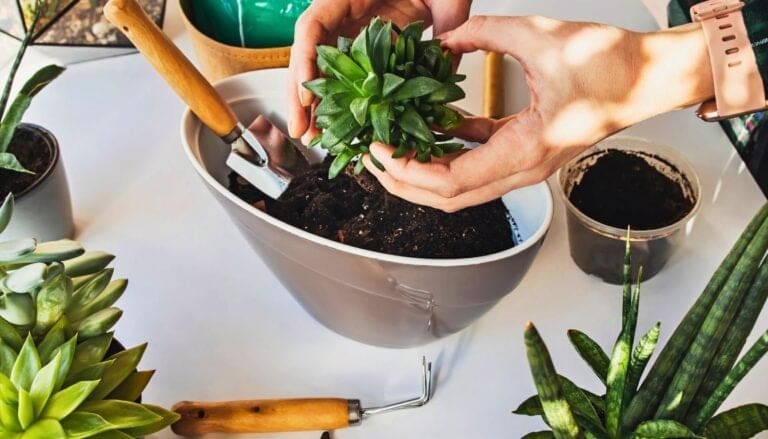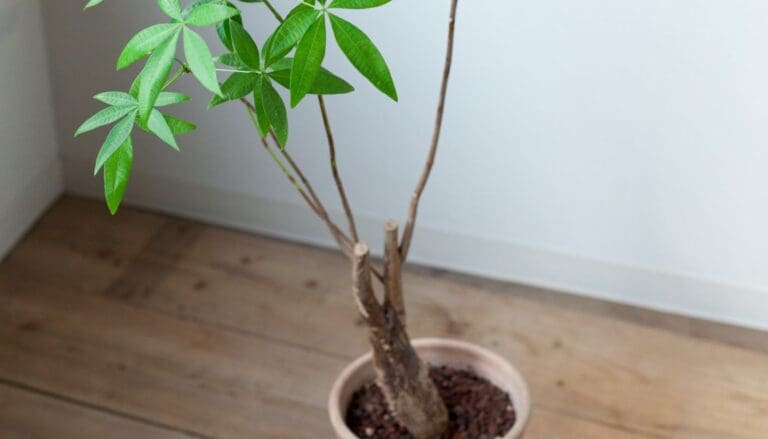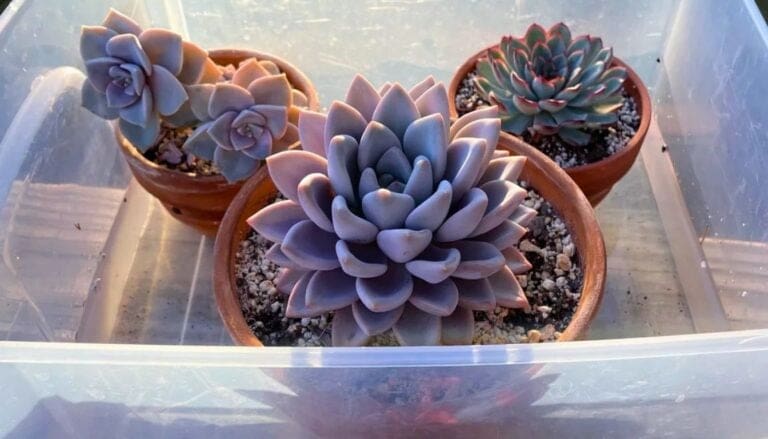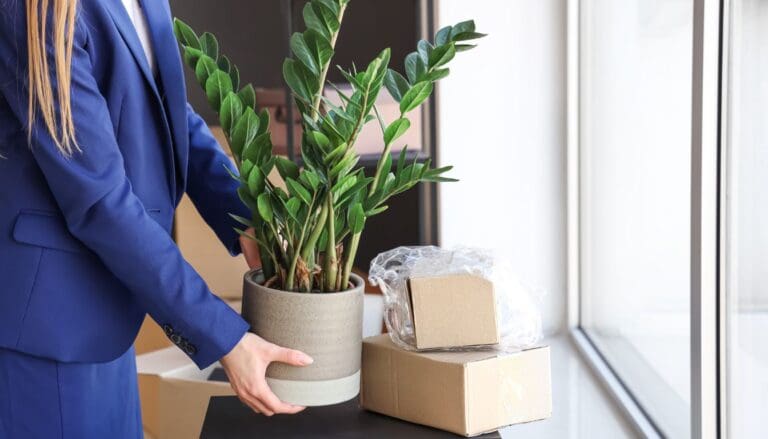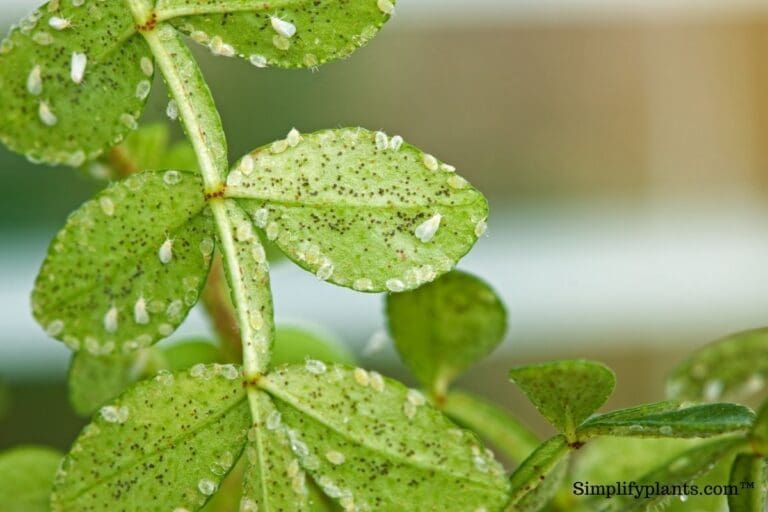10 Quick Houseplant Watering Adjustments to Make This Fall
When fall rolls in, I can’t help but notice my garden feels different. Cooler weather just changes everything.
The way I care for my plants, especially watering, needs a little tweak this time of year. It’s not complicated, but it makes a difference.
Making a few quick watering adjustments in the fall helps my plants stay healthy and save water.
I find it’s way easier to keep my yard looking good when I know what steps to take as the seasons shift.
Please note: Simplify Plants is reader-supported. As an Amazon Associate, I earn from qualifying purchases made by our readers with no extra cost added to you all! Some links in the post are affiliate links and I get a commission from purchases made through links in the post.
1) Reduce watering frequency as temperatures drop
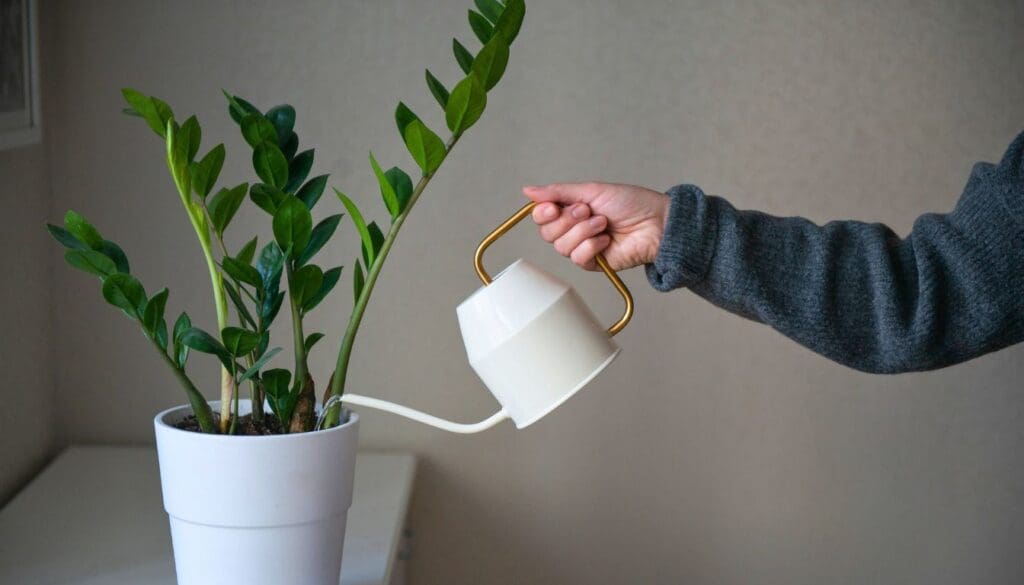
As fall arrives, the days get cooler and the sun sets earlier. That means my grass and plants just aren’t as thirsty.
I always water less often when temperatures go down because the soil stays moist longer. Cooler air slows evaporation, so my yard doesn’t dry out so quickly.
In the summer, I might water every few days. But once fall hits, I cut back to once a week or even less.
I check the soil with my finger—if it’s damp, I wait a few more days. Too much water in cooler weather can harm roots.
Overwatering is easy if I stick to my summer routine. Changing my schedule keeps plants healthy and saves water.
If I see rain in the forecast, I just skip a watering day. Fall weather is unpredictable, and sometimes natural rainfall is enough.
I also watch for yellowing leaves or slow growth. These signs tell me my plants need less water now.
When I reduce watering in the fall, I help prevent mold and diseases that pop up when the soil is always wet. My plants actually grow stronger this way.
It’s simple, but it really does make a difference. My yard stays happy, and I don’t waste water as the seasons change.
2) Water early in the morning to minimize evaporation
I always try to water my garden early in the morning. Temperatures are cooler, and the sun isn’t blazing yet.
When I water before sunrise or just after, less water evaporates. My plants get to use more of the moisture.
This helps them grow stronger and makes my watering efforts actually count. If I wait until later, most of the water just disappears into the air.
Early morning watering also lets leaves dry out faster. Dry leaves can help prevent plant diseases and rot.
I’ve noticed my flowers and veggies seem healthier when I stick to this routine. Setting a timer on my sprinkler or hose makes things easier, especially on busy mornings.
Early watering is a small change with big rewards for my garden. My plants stay happier and I use less water each week.
3) Check soil moisture before watering

Before I grab my watering can, I always check the soil moisture. I just stick my finger about an inch into the dirt.
If it feels damp, I know my plants don’t need extra water right now. If the soil feels dry to the touch, then it’s probably time to water.
This quick test saves me from overwatering, which can really mess up plant roots. Fall weather usually brings more rain and cooler temps, so the soil doesn’t dry out as fast as in summer.
I also use a simple soil moisture meter if I want to be sure. It’s easy to find at garden stores and tells me exactly how wet or dry the soil is.
I find this tool helpful, especially for pots or garden beds where I can’t see the soil well. Checking before I water means I only add water when my plants actually need it.
It also helps me save water and keeps my plants healthier. I’ve learned that less is often more when it comes to gardening in the fall.
It doesn’t take much time. A quick check each week gives me a better idea of how much water my garden needs.
4) Cut back on fertilizer to prevent excess growth

In the fall, I always reduce the amount of fertilizer I use on my plants. Cooler temps and shorter days slow down plant growth naturally.
If I keep feeding them too much, they can start growing when they really shouldn’t. Over-fertilizing in fall can encourage weak, new growth that won’t survive winter.
I want my plants to stay healthy, so I let them slow down before the cold hits. I make sure to stop using high-nitrogen fertilizers during this season.
These types of plant food push leafy growth that’s just not helpful in the fall. Sometimes I pause fertilizing completely, or use a fertilizer made for fall if I really need to.
When I cut back on fertilizer, my plants use less water. This helps me avoid overwatering and keeps soil from getting too soggy.
If I spot any stress or yellow leaves, I hold back on fertilizing even more. Too much plant food can actually hurt roots, especially when sunlight is weak.
Plants naturally rest when days get cooler, and my watering and feeding should match that rhythm. Less fertilizer now leads to healthier, stronger plants next spring.
5) Mulch garden beds to retain soil moisture
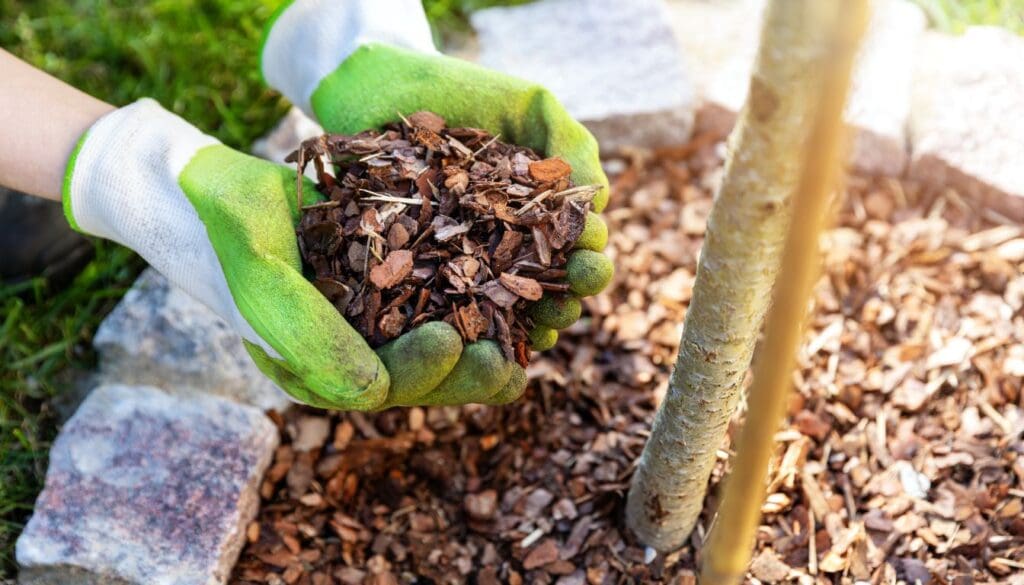
When fall arrives, I always add a fresh layer of mulch to my garden beds. Mulch helps lock in soil moisture so I don’t have to water as often.
Mulch is made of things like shredded leaves, bark, or straw. I spread it two to three inches thick around my plants, but I’m careful not to pile it right up against the stems.
Cooler weather can dry out soil quickly. By mulching, I protect plant roots from fast temperature changes and help keep the soil damp.
I like using mulch because it also blocks weeds. Less weeding means more time to enjoy my garden.
Another reason I choose to mulch is that it improves the soil as it breaks down. Healthy soil means healthier plants.
When I water after adding mulch, I notice the water doesn’t evaporate as fast. My plants get more of what they need, and I save time and water.
I always check that mulch stays a few inches from stems to stop rotting. If I see exposed dirt, I add a little more mulch until the bed is covered.
Using mulch is one simple step I take every fall to help my garden keep its moisture longer.
6) Adjust drip irrigation timers for cooler days
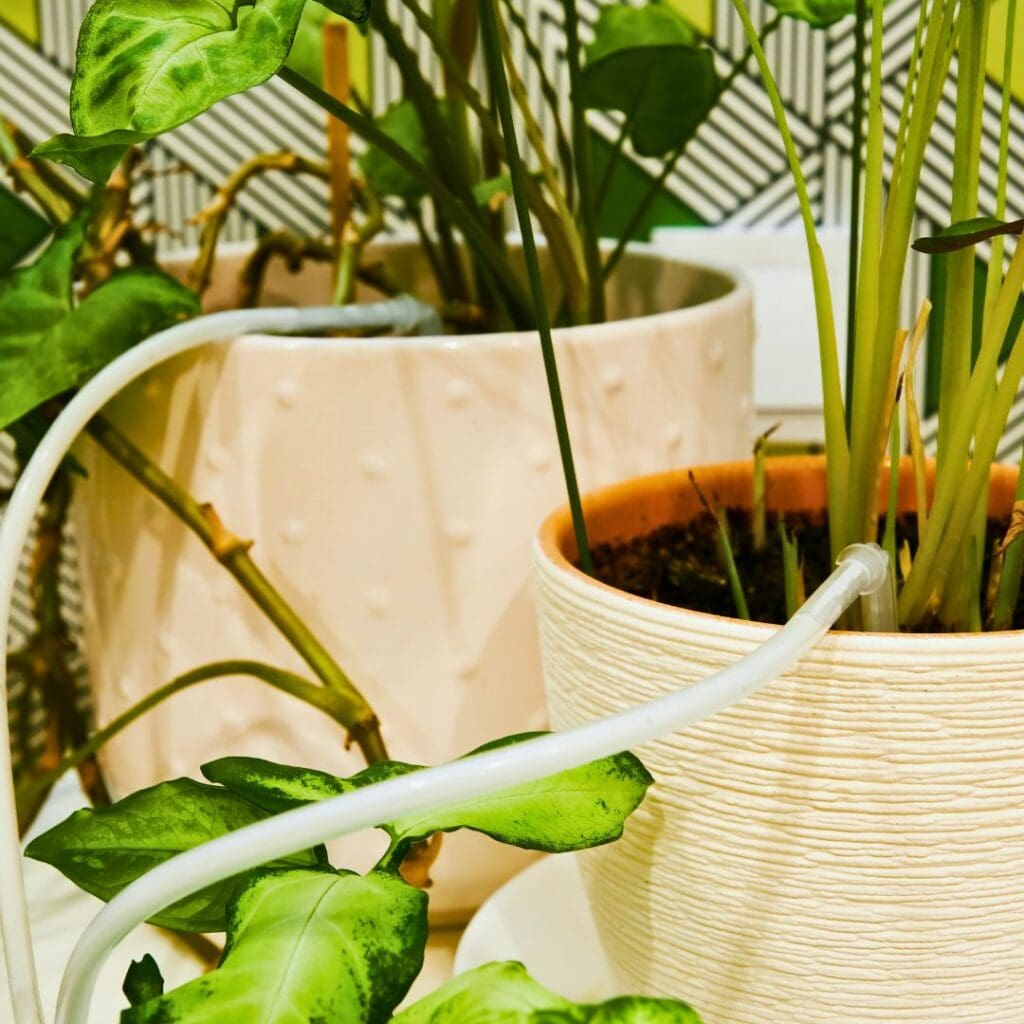
When fall arrives, I notice plants need less water. Cooler temperatures and shorter days mean soil stays moist longer.
So, I always check my drip irrigation timers. I make sure to reduce how often the system runs.
Instead of daily cycles, I switch to every other day or even less. This small change helps avoid overwatering, which can harm roots.
Morning is the best time to water in the fall. I set my timer to turn on right after sunrise.
This gives plants what they need without leaving soil soggy overnight. I also check soil moisture before making timer changes.
If the soil feels damp, I lower the timer schedule again. Drip irrigation is easy to tweak, so small adjustments go a long way.
As days get even cooler, I keep an eye on the weather. If rain is coming, I pause the system.
This saves water and keeps my plants healthy during fall.
7) Water deeply but less often to promote root growth
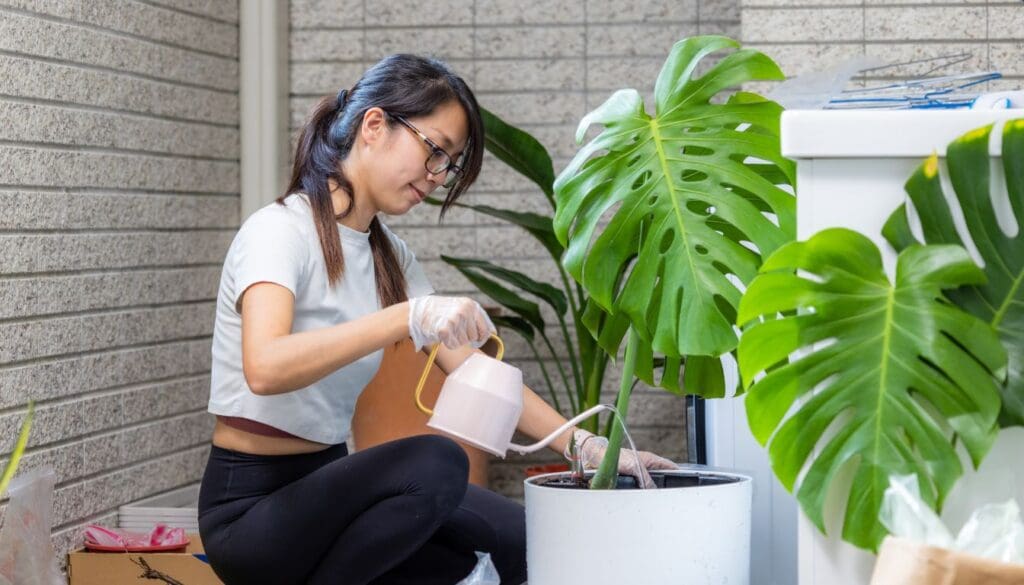
I try to water my plants less often in the fall, but when I do, I make sure the water goes deep. This helps the roots grow stronger and reach further down for moisture.
Shallow watering only wets the top layer, which doesn’t really help the roots much. Deep watering means the soil stays moist down where the roots actually grow.
Instead of giving a little water every day, I water only once or twice a week. This way, plants don’t get too used to surface water, and their roots stretch deeper.
The deeper the roots, the healthier my plants tend to be. Strong roots help plants survive cold winter months and dry spells.
I usually check the soil by sticking my finger in. If it’s damp a few inches down, I know I’ve watered enough.
I avoid leaving the soil soggy, though. Too much water can cause root rot, especially in cooler fall weather.
It’s all about balance—water deeply, but let the soil dry between waterings. Watering less often also helps me save time and water.
Plus, I find that my plants look happier and stay green longer when I follow this routine. I always remind myself that deep watering isn’t about using more water at once.
It’s about giving the plants enough so the moisture reaches the root zone. That’s what helps my garden get ready for the changing seasons.
8) Avoid overhead watering to prevent leaf diseases

I always try to avoid overhead watering, especially as the weather cools down in fall. Watering with sprinklers or hoses from above can leave water sitting on the leaves.
Wet leaves are more likely to get diseases like mildew or leaf spot. When I switch to watering at the soil or base of my plants, I notice fewer problems.
Using drip irrigation or soaker hoses delivers water right to the roots. This helps plants get the moisture they need without soaking their leaves.
I also try to water early in the day if I have to use a sprinkler. This gives the sun enough time to dry the leaves before it gets cool at night.
Wet leaves overnight can create the perfect conditions for fungus and other plant diseases. Most garden experts recommend watering at the soil level for healthier plants.
In the fall, this is even more important since cool weather can help diseases spread. If I see spots or white powder on my plant leaves, it’s usually a sign I need to adjust my watering methods.
Keeping the leaves dry is one of the easiest ways to cut down on plant problems as the season changes. Switching to soil watering is a simple step that really helps my plants stay healthier through the fall.
It saves water, too, which is always a bonus.
9) Remove fallen leaves to prevent mold and fungus

I’m always on the lookout for fallen leaves in my yard during fall. Wet leaves can trap moisture around my plants, and honestly, that’s just asking for trouble.
It’s way too easy for mold and fungus to pop up when things stay damp. If I let piles of leaves build up, they don’t just look messy—they also block sunlight and airflow.
Plants really do need sunlight and air to stay healthy, no matter what. I usually grab a rake or the leaf blower and clear leaves off my lawn and garden beds at least once a week.
That little bit of effort gives my plants a chance to breathe. It also keeps the soil from being soggy for too long after watering.
Mold and fungus can spread fast when it’s cool and damp out. Picking up leaves before they pile up is just one of those things that keeps my yard healthier.
If I spot any moldy or discolored leaves, I collect them right away. Those never make it into my compost, since mold can spread to other plants later.
Only healthy leaves go into my compost pile. I always check hidden spots too—fallen leaves love to sneak between shrubs, behind pots, and around tree trunks.
Clearing out these tucked-away leaves actually makes a bigger difference than you’d think. By staying on top of leaf cleanup, I don’t have to water my plants as often.
The ground dries out better, so I’m not accidentally inviting more fungus or mold. Leaf removal doesn’t have to take forever.
Even a quick sweep once a week helps my garden stay healthy all season.
10) Protect plants from early frost with light covers

I always keep an eye on the weather in fall—frost can sneak up earlier than I expect. When I hear a cold night’s coming, I grab some light covers: old sheets, towels, or that special garden fabric.
Covering my plants helps trap a bit of warmth. Light covers are great—they block frost but still let the air move through.
I steer clear of heavy plastic since it can trap too much moisture and end up hurting my plants. I try not to let the covers touch the leaves too much.
Sometimes I’ll use sticks or little stakes to keep the cloth up off delicate plants. That way, they get a bit of a warm bubble and are less likely to get frost damage.
I put the covers on just before sunset and take them off in the morning once it warms up. Leaving covers on during the day can overheat plants or trap extra moisture, which isn’t great.
I keep my covers handy so I can throw them on quickly if the weather changes. It really doesn’t take much time, and a simple cloth cover can save my plants from a surprise frost.
Honestly, it feels good knowing that with a little effort, I can protect my garden when the weather turns chilly.
Why Fall Watering Matters
I always notice my plants acting a bit different in fall compared to summer. The shift in weather changes how they grow—and how thirsty they are.
Seasonal Changes and Plant Needs
As temperatures drop and days get shorter, my plants start using less water. Cooler air and damp soil slow things down, so they don’t dry out as fast as they do in summer.
Still, soil can lose moisture, especially if it’s windy or there’s a dry spell. If I stop watering too soon, roots can dry up before winter even gets here.
Moist soil actually helps roots survive cold weather because it acts as a buffer against freezing. I always check soil dampness down to about two inches before watering.
Some plants—like evergreens or cool-season lawns—keep growing through the fall, so they need a little more attention with watering. Even if rain’s in the forecast, I don’t ignore them.
Impact on Lawn and Garden Health
Proper fall watering helps lawns and gardens get ready for winter. Healthy roots in moist soil are way less likely to get zapped by frost.
When I water deeply but less often, roots grow deeper and plants get tougher. Dry patches or overwatering can stress out the lawn, making it weak when spring rolls around.
I skip watering after heavy rain to avoid fungus or rot. Watering in the morning gives leaves time to dry out, which helps keep disease away.
Common Mistakes to Avoid in Fall Watering
I try to pay close attention to how much and how often I water. It’s easy to slip up when the weather cools down and plants start changing their needs.
Overwatering Concerns
Overwatering is honestly one of the biggest mistakes I make in fall. Once it gets cooler, my plants and lawn don’t need as much water.
Soil stays wetter longer, and if I stick to my summer routine, I end up with excess moisture. That can cause root rot, fungus, and yellow leaves—not exactly what I want.
I check the soil with my finger about two inches down before even thinking about the hose. If it feels damp, I skip watering.
For bigger gardens, I’ll use a moisture meter just to be sure. In fall, I water less often and only when needed.
Most lawns and gardens need less than an inch of water per week during cooler months. If it rains, I cut back even more.
Too much water does more harm than good in fall.
Ignoring Weather Patterns
I never just trust the calendar. Fall weather is all over the place—some years it’s dry and sunny, others it’s wet and chilly.
If I ignore recent rain or cold snaps, I waste water and risk hurting my plants. I always check the weekly forecast.
If rain’s on the way, I hold off on watering. Cooler nights mean plants hold onto moisture longer.
Sometimes we get early frosts or random heat waves. I tweak my watering plan every week to match the weather.
I don’t rely on timers alone; I keep an eye on rainfall and temps so I don’t end up watering too much or too little.
Frequently Asked Questions
I notice my garden needs less water as the air cools and days get shorter. Keeping an eye on changing temps and soil moisture helps my plants stay happy through fall.
How often should I water my garden in the autumn months?
I check the soil before watering. Usually, I water my garden once a week or even less, especially if it’s been raining.
Should I adjust the amount of water my plants receive as the weather cools?
Yes, I always reduce the amount of water as temperatures drop. Plants just don’t need as much water in cooler weather, so I try not to overdo it.
What’s the best time of day to water plants in the fall?
I water early in the morning. That gives my plants time to dry out during the day and helps keep mold away.
Can the changing fall temperatures affect my watering schedule?
Yes, changing temps mean my plants usually need water less often. Cool nights and mild days help the soil stay moist longer.
How can I tell if my plants are getting too much or too little water in autumn?
I poke my finger into the soil. If it’s dry a couple inches down, I water. If it’s soggy, I cut back on watering.
Are there specific watering tips for fall to help prepare plants for winter?
I mulch my garden beds to hold in moisture and protect roots. Honestly, I skip fertilizer this time of year so my plants can wind down and get ready for winter.
Recommended Garden Supplies
| Product Image | Our Recommended Gardening Supplies | Check Offers! |
|---|---|---|
Top Top
Top
Top
Top
Top
Top
Top
Top | rePotme Houseplant and Tropical Classic Potting Soil Mix | Check Offer On Amazon |
 Top
Top
Top
Top
Top
Top
Top
Top | Espoma Organic Indoor Plant Food | Check Offer On Amazon |
 Top
Top
Top
Top
Top
Top
Top
Top | GooingTop LED Grow Light 6000K Full Spectrum Clip Plant Growing Lamp | Check Offer On Amazon |
 Top
Top
Top
Top
Top
Top
Top
Top | Soil Moisture Meter | Check Offer On Amazon |
 Top
Top
Top
Top
Top
Top
Top
Top | Govee Hygrometer Thermometer, Bluetooth Enabled! | Check Offer On Amazon |
 Top
Top | LEVOIT Humidifiers for Large Room(Best For Plants) | Check Offer On Amazon |
 Top
Top
Top
Top
Top
Top
Top
Top | Upgraded DIY Automatic Drip Irrigation Kit, 15 Potted Houseplants Support | Check Offer On Amazon |
 Top
Top
Top
Top
Top
Top
Top
Top | Stainless Steel Heavy Duty Gardening Tool Set | Check Offer On Amazon |
 Top
Top
Top
Top
Top
Top
Top
Top | Bonide Insecticidal Soap | Check Offer On Amazon |
 Top
Top
Top
Top
Top
Top
Top
Top | Bonide 32 oz Spray Neem Oil for Organic Gardening | Check Offer On Amazon |
 Top
Top
Top
Top
Top
Top
Top
Top | Garden Safe Fungicide | Check Offer On Amazon |

